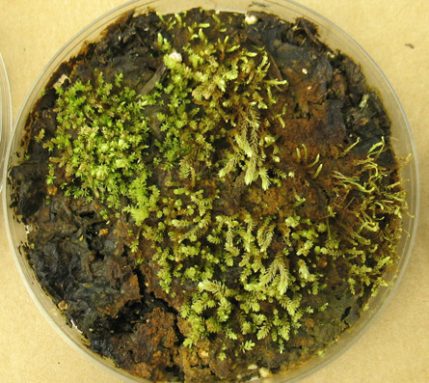Old, cold moss grows again
Scientists prod new growth from a plant buried for centuries

Mosses are mini but mighty: Even after centuries buried beneath a glacier, some of these small, flowerless plants can regrow.
Glaciers are flowing rivers of ice. The one that trapped these mosses grew during a cool period now known as the Little Ice Age. It lasted from 1550 to 1850. The glacier buried all plant life on remote Ellesmere Island, north of the Arctic Circle. But as global temperatures have been climbing, this and many other glaciers have retreated, exposing ancient mosses.
Those plants grow in damp places, often carpeting the ground. Mosses uncovered by the shrinking Ellesmere glacier looked like messy, brown clumps. Hidden amongst them were a few small, green spots, notes Catherine La Farge. This biologist works at the University of Alberta in Edmonton.
Back in the lab, her team used radiocarbon dating to figure out the age of the brown mosses. Every living organism contains different types of the element carbon. One form, called carbon-14, is radioactive. (Its nucleus releases energy as it slowly — but continuously — sheds particles, a process called decay. Eventually, each carbon-14 atom will end up as an atom of nitrogen.)
When something dies, it no longer gets any new carbon-14. Meanwhile, its existing carbon-14 continues to break down. Scientists can determine how long ago something died by identifying what share of its carbon is carbon-14.
Ice must have buried the mosses 400 years ago, those analyses now show.
La Farge’s team then ground up the brown moss bits and gave them water, sunlight and food. “We didn’t do anything fancy,” La Farge told Science News. Still, seven of the 24 bits of ancient moss grew new buds. Unlike plants that grow from seed, a new moss plant can spring from any single, healthy moss cell given the right conditions.
The study suggests that these small plants may help bring back life to a land that has spent centuries beneath ice. It’s possible, the scientists say, that mosses may be able to grow again after even longer periods of cold storage.
Power Words
radiocarbon dating A process to determine the age of material from a once-living object. It is based on comparing the relative proportion, or share, of the carbon-12 to carbon-14. This ratio changes as radioactive carbon-14 decays and is not replaced.
glacier A slowly moving mass or river of ice formed by the accumulation and compaction of snow on mountains or near the poles.
moss A small, flowerless green plant that lacks true roots. It tends to grow as carpets or rounded cushions in damp habitats. It can reproduce asexually, through fragmentation, or by means of spores released from stalked capsules.
Arctic Circle The northernmost point at which the sun is visible on the northern winter solstice and the southernmost point at which the midnight sun can be seen on the northern summer solstice.
carbon The chemical element of atomic number 6. It is the physical basis of all life on Earth.







